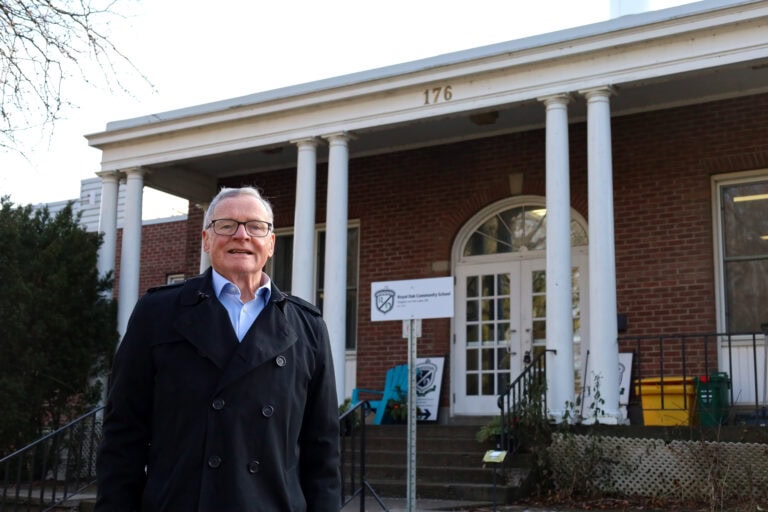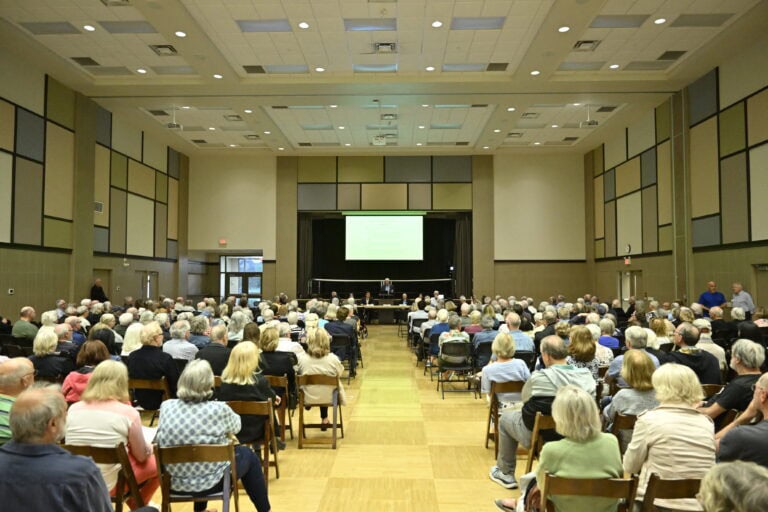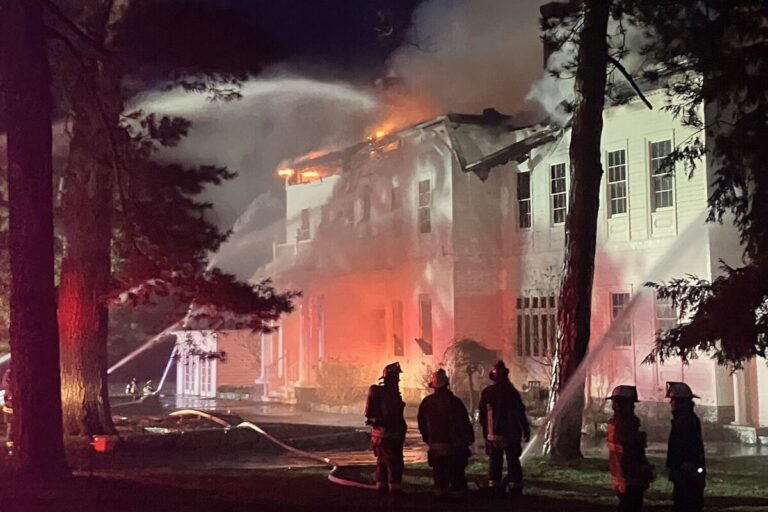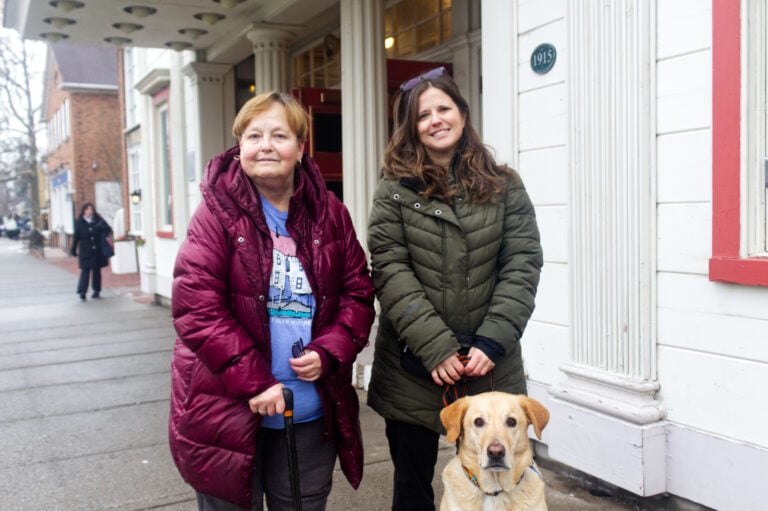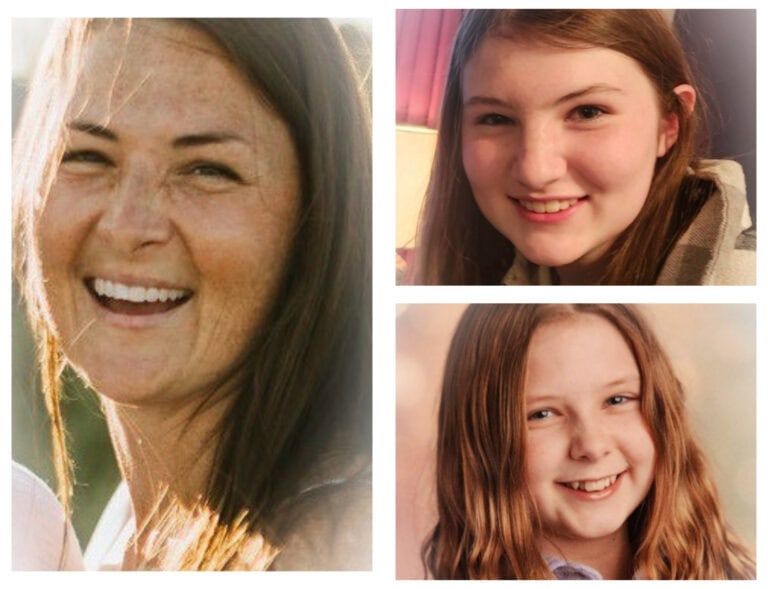Now more than ever, Niagara charities and non-profits need community support
Editor's note: The Lake Report asked a cross-section of Niagara-on-the-Lake charitable and non-profit organizations to talk about what they are doing to survive the COVID-19 pandemic and how they are striving to thrive in the so-called new normal. Aside from belt-tightening and new approaches to fundraising, two themes permeate their urgent transformation: most are jumping to virtual contact and digital programming, and many are seeking opportunities to collaborate with similarly challenged organizations. Here’s how they are faring:
Niagara-on-the-Lake Museum
www.nhsm.ca
The town’s museum has been around since long before the last great pandemic — the so-called Spanish Flu of 1918. So, it is safe to say, the 125-year-old local institution has had its fair share of challenges.
“We’re not letting the pandemic tear this organization down,” says Sarah Kaufman, the museum’s managing director/curator. “They kept going during the 1918 pandemic, even without the internet!”
During all the shutdown craziness, the museum has also pushed forward with major renovations and a name change to better reflect the institution’s role in the community.
Having lost major funding sources from admissions, tours and gift shop sales, the museum staff and board of directors have severely curtailed conventional programming.
“We slashed our budget to see where we could pause our projects. We planned based on no revenue in 2020. Lots of things got cut — exhibitions, publications, new acquisitions, education, marketing and so on.”
The organization also is doing more digitally.
“Before the pandemic, our social media content was spotty. Now we are posting content as much as twice a day — videos, quizzes, and content driven posts, sharing resources. And virtual exhibits.”
The museum has had to cancel its regular Polo Fundraiser this fall.
“That was about $50,000 in fundraising, it’s not happening. So, we need to find other activities — mostly smaller — to pick up the slack. So far, we have tried drive-by pig roasts, and everyone is supporting us with their tummies.
“We’re hoping our community will use whatever resources it has to help us stay afloat. Buying memberships is a great way to sustain us.
“Now is the time.”
Music Niagara Festival
www.musicniagara.org
Like the museum, Music Niagara has lost the ability to bring its traditional product to market and to raise much of the money it needs to make it happen.
“We suffered a double hit,” says Karen Lade, the organization’s general manager. “No ticket sales and no fundraising events.”
This would have been the much-lauded music festival’s 22nd summer season, presenting over 30 diverse musical experiences from some of the world’s best-known performers, at the region’s most intimate and interesting local venues.
The pandemic brought it all to a screeching stop.
On the fundraising side, Music Niagara’s cornerstone event, The Big Night Gala, which annually raised more than $50,000, was quickly cancelled.
“We’ve become much more targeted in our fundraising,” says Lade. “Our major supporters have remained quite strong. Now we have to find music lovers who have not been hit too hard by the pandemic.”
The festival has announced an online “At Home Series ” of performances, recorded at both international and local venues, on many Sunday afternoons through August and September.
The 13-concert collaboration with venues, performers and volunteer videographers, will help bring the essence of the original 2020 summer season, not only to the festival’s loyal local following but also to music lovers around the world.
“We have learned to be patient — no one knows when or how this will end, and we have to go on and keep Music Niagara thriving.”
Newark Neighbours
www.newarkneighbours.ca
Laura Gibson has been chair of the Newark Neighbours board of directors for four years, helping bring food security to its Niagara-on-the-Lake clients.
The organization’s almost 40 volunteers are immensely proud of their contribution.
“We’re like a family,” says Gibson. “And we’re all seniors, so we’ve had to be very careful during the pandemic, particularly when we are sorting items and such.”
Gibson is quick to respond to why NOTL needs a food bank. “We’ve been in operation for almost 50 years. People in the broader community are in need. People have had hard times in their lives. All our clients are low income and must be living in Niagara-on-the-Lake.”
The food bank gets its provisions directly from food donations, financial contributions and by operating its Thrift Shop, a retail store of gently used clothing and household items donated by the community.
“Revenues from the Thrift Shop usually go to buy the food and cover very modest operating costs,” says Gibson. “Anything left over supports four bursaries that go to local students going off to post-secondary education, our support of Red Roof Retreat, or to other needy food banks in the area that are busier than ours.”
In the face of the pandemic, the Thrift Shop has been temporarily closed, largely due to the limited space for sorting. Now, as plans to reopen are being put in place, Newark Neighbours is not accepting clothing and household item donations.
“We will no longer be accepting donations of clothing and household items,” says Gibson. “We are now well-stocked when we open our Thrift Store.”
Gibson says Thrift Shop donations have skyrocketed. “Everybody is cleaning out their basements. People want to donate something. And we are becoming the beneficiary.”
She is aware Newark Neighbours, as a charity, has fared well during the pandemic.
“We are truly fortunate. Because our population includes many retirees, we are not as dependent on jobs. Many of us have adequate fixed incomes. So, we’re in a better position to donate to others more needy than we are. The community has really responded to our needs.”
TD Niagara Jazz Festival
www.niagarajazzfestival.com
Juliet Dunn is the co-creator, executive director and artistic producer of the seven-year-old regional jazz festival, which in a normal year, produces more than 50 events, largely in its summer festival in July.
Believe it or not, the festival has already presented over 40 concerts since the lockdown in March. It mounted its second annual Summer Mardi Gras online on July 18.
“I’ve been producing all of the online content so far,” says Dunn. “It hasn’t gone perfectly but everyone is learning.” The organization hired technical support for its Summer Mardi Gras production.
“We have certainly had a reduction in sponsors. But we’ve also had strong support for keeping music alive.”
The online concerts have drawn greater than normal donations during the pandemic.
“We pay the musicians, but they need as much as they can get. We’ve been very happy the musicians have been able to collect virtual tips through the streaming process. It all counts.”
The festival has had to trim its budget by more than half, from $330,000 to $150,000 this year.
“We will need to live stream all our events in the future, even if we have small in-person gatherings at the same time. It’s the way of the future.”
Niagara-on-the-Lake Palliative Care Service
www.notlpc.com
At any given time, Niagara-on-the-Lake Palliative Care service volunteers are working with as many as 150 client/patient visits coping with life-limiting illnesses, death and bereavement. The local service is in its 35th year and last year its volunteers made 1,800 visits.
All of that ground to a halt in March.
“It’s tragic that the pandemic has closed these end-of-life patients off from our support and their families,” says Bonnie Bagnulo, executive director of the agency. “These patients need to connect both spiritually and emotionally.”
“In the early days of the pandemic, it was impossible for our volunteers to connect, particularly for patients in long-term care homes.”
So, the palliative care team put their thinking caps on: “How can we at least connect with people trapped behind the COVID barrier?”
The answer came through a grant from an emergency COVID response fund: 20 iPads. Now with the help of staff at care homes, the palliative care organization can use the internet to connect directly with clients. And, perhaps more importantly, client families have a chance to keep their love ones closer.
“Much of our funding comes from thankful families who are appreciative of the services we provide,” says Bagnulo. “So, when our services stopped, so did much of our income. But government support has allowed us to maintain our administrative momentum.”
Like other non-profits, the palliative service’s major fundraising event has had to change, too. Instead of a one-day, provincewide, Healing Cycle ride, the event will go virtual for an entire week in each of the participating communities.
“So, your whole family or work group can make and fulfil riding and fundraising commitments. It will run for a week just after Labour Day.”
Nyanyas of Niagara
www.grandmotherscampaign.org
Since 2007, the Niagara-on-the-Lake chapter of the Stephen Lewis Foundation's Grandmothers for Grandmothers has raised more than $100,000 to help fight the HIV/AIDS pandemic in sub-Saharan Africa.
The local chapter boasts more than 150 active, dedicated grandmothers.
The Nyanyas (Swahili for grandmother) use fundraising events — often special lunches and dinners, highlighting speakers and foods with an African theme, children’s book sales and individual “blessing jars” to collect spare change when the keepers count their blessings.
If the pandemic has closed the event doors, the Nyanyas are redoubling their smaller fundraising efforts, maintaining their enthusiasm with regular Zoom meetings.
“I’ve been astonished by the number of people who have agreed to fill blessing jars in support of the grandmothers,” says Terry Mactaggart, one of the founders of the Niagara-on-the-Lake group.
“Granny Power is an extraordinarily strong force to behold. We are confident the Nyanyas can continue to support the indomitable African grandmothers. And have fun doing it.”
Niagara Pumphouse Arts Centre
www.niagarapumphouse.ca
The Pumphouse ended 2019 on a real high. The small public gallery, perched on the Niagara River, downstream from Navy Hall, celebrated its 25th anniversary with the completion of a major interior renovation.
When the pandemic forced an almost immediate shutdown, the board of directors and staff pivoted quickly from live visitors and students to online programming.
Lise Andreana has been chair of the Pumphouse for more than three years. “Our art classes are particularly appropriate for sale,” says Andreana. “We’ve always charged a fee to attend our classes, so putting them online works well. And our YouTube classes are being saved and we can put them up for sale again later.”
Andreana hopes going online will broaden the galleries’ audience, as well. “It’s a way of expanding our market and reach. Now, we are locally focused. But one of our recent classes drew a participant from British Columbia. It allows our small organization to grow virtually.”
The Pumphouse is also reaching out to other area non-profit organizations that may have common interests — forced to close, limited public access, cancelled special events.
“I think that these are relationships that we can continue to foster,” says Andreana. “We are certainly open to collaboration. It will lead to being in a better position for all of us.”
RiverBrink Art Museum
www.riverbrink.org
RiverBrink opened to the public in 1983, presenting historical and contemporary exhibitions, educational programming and tours, in the former home of Samuel Weir, overlooking the Niagara River just north of the village of Queenston, on the Niagara Parkway.
Plans are underway to reopen the gallery on a limited basis, according to Debra Antoncic, curator/director of RiverBrink for five years.
“We will be open by appointment only,” says Antoncic, “so we can limit the number of people. We’re just waiting until we get our shields in place, extra masks and the cleaning protocols established.”
“I’m hoping that our new digital content will bring some new people,” she adds. “And then we can build on that when we can actually have people in the space.”
As well, RiverBrink is launching an Adopt An Artwork sponsorship program.
“We need to build ourselves more closely into the fabric of the community, so locals will come not just for openings but keep returning regularly. I hope our community will take a special look at all the local non-profits during this exceedingly difficult time.
“To lose them, it’s hard to bring them back.”
Rotary Club of Niagara-on-the-Lake
www.niagaraonthelakerotary.ca
Ken Schander, the new president of the Rotary Club of Niagara-on-the-Lake, admits he needs to increase his charitable contributions.
“As a member of the community, I’m not travelling, I’m not going to the symphony, I’m not eating out — my bank account is growing. There are charitable opportunities and I need to respond to them.”
Technically, Rotary is not a non-profit. It is a service club, dedicated to raising money to support other charities and non-profits.
“We are certainly going to survive the pandemic. But it is not the same old, same old. Our opportunities to help others, as we have in the past, are changing.”
Rotary’s two big local fundraising events —the Christmas House Tour and the Canada Day celebrations in Simcoe Park — have been cancelled for the year. The house tour alone raises more than $100,000 to support Rotary contributions.
“We’ve had to explore new ways of doing things. We have held extensive internal discussions on how to move forward and we hope to explore a number of smaller things, searching for new sustainable fundraising activities.
“We’d really like to get back to our standby events,” says Schander. “But that’s unlikely to happen soon.
And Rotary has always worked with other local service clubs — sharing equipment, scheduling events and so on. “We expect to have more collaboration, as time goes on.”
________________________________
Canada Needs its charitable sector: Imagine Canada
Imagine Canada, a major umbrella organization for the Canadian charitable sector, describes the revenue and manpower impacts of the pandemic on charities and non-profits, as “beyond anything we have seen before.”
In its May 2020 Sector Monitor, Bruce MacDonald, Imagine Canada’s CEO, writes: “Whatever the new 'normal' is, one thing is clear — more than ever, communities in recovery are going to need vibrant charities and non-profits of all types.”
Some highlights of the report:
- Organizational capacity has decreased 40 per cent for charities.
- Revenues have declined an average of 30.6 per cent since the onset of the pandemic.
- 30 per cent of charities have already laid off staff and 55 per cent say more layoffs are possible.
- Full- and part-time layoffs exceed an estimated 80,000 people.
- 49 per cent of volunteers are unavailable because of working conditions.
- 54 per cent have transitioned in-person programs to online and 42 per cent have developed completely new programs to respond to the needs.





